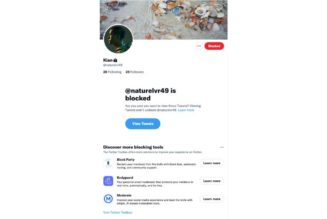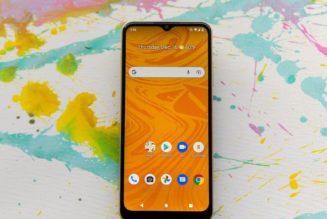
How much is it worth to be shareable? BuzzFeed founder Jonah Peretti is hoping for about $1.5 billion.
BuzzFeed has agreed to go public through an acquisition by 890 Fifth Avenue Partners, a publicly traded company with no purpose except to buy another company. (890 Fifth Avenue Partners is part of a recent wave of special purpose acquisition companies, or SPACs, which some startups are using to go public.) As part of the deal, BuzzFeed is also acquiring Complex Networks, another media company, for $300 million.
Cast your mind back, if you are able, to the antediluvian era, before the 2008 crash. Peretti, who had graduated from the MIT Media Lab, had taken his expertise in online popularity — which, in that era, was search engine optimization — to found The Huffington Post in 2005. A year later, he created BuzzFeed as an experiment to discover what content people would share on social networks. In 2011, when AOL bought The Huffington Post, Peretti left — and BuzzFeed became his mission.
This was a significant shift, one that Peretti was quicker to understand than a lot of other web types. In the SEO era, you could fake it based on the right keywords — “What time is the Super Bowl?” — but people wouldn’t share that kind of thing. People had to intentionally share something on Facebook because they liked it or because they liked what sharing it said about themselves. From the jump, BuzzFeed was interested in truly massive scale, and most of its content was aimed at surfing Facebook shares to traffic.
It worked. At first, BuzzFeed focused mostly on quizzes and memes, but in December 2011, Peretti hired Ben Smith from Politico to build out a news division. People shared news, too, after all — and sharing was the point.
“One thing Jonah was saying very early on that people thought was crazy — I thought he was crazy — was that platforms were like cable networks, and we had to find distribution on the new networks,” says Smith, now the media columnist for The New York Times. “Ultimately, directly or indirectly, they were going to pay.” This turned out to be true, to some degree; BuzzFeed set up several lucrative relationships with platforms such as Snapchat. Smith declined to comment on whether the news division was profitable while he ran it.
From the beginning, BuzzFeed did headline A/B testing — and the headline that got more shares was the one that won. The revenue bet, at first, was on sponsored content since there were no display ads. HBO would pay for a quiz (“How Would You Die In “Game Of Thrones”?) or Pillsbury would pay for a listicle (“10 Things You Never Knew You Could Do With a Crescent Roll”). People would share things if they liked them or if they thought they were good — something most people won’t do for other kinds of ads. That meant BuzzFeed’s sponcon traveled further than competitors’ ads.
At the time, BuzzFeed’s dependence on Facebook was seen as savvy: it had unlocked some kind of secret formula, and suddenly, BuzzFeed was everywhere. Other media companies scrambled to catch up with how BuzzFeed was reinventing the culture of a newsroom. BuzzFeed was fun, several early news hires tell me. “You’d be working in the office, and an army of people would walk in,” Charlie Warzel, a former BuzzFeed tech reporter, says. “And it’d be like, Tyler the Creator and Grumpy Cat. One day, we were working in the newsroom, and we heard this bellowing. And Tracy Morgan came in, just yelling.”
In 2013, Facebook was sending a lot of traffic to publishers. The company had tweaked its algorithm such that traffic spiked a nice 69 percent from August to October that year. Facebook was, at the time, trying to compete with the reporters’ platform of choice, Twitter. In retrospect, this should have been a warning shot, but the party went on — and BuzzFeed continued expanding after an injection of $50 million in 2014 from VC firm Andreessen Horowitz, valuing the company at $850 million. BuzzFeed moved offices, and it was hard to keep up with the influx of new employees.
“From 2013 to 2015, we mostly looked at platforms as playgrounds,” Warzel says. Sure, they’d be volatile, but they were places to experiment and learn. Several people I spoke to for this article described this period as playful. There was a kind of trust in the platforms, they say. If BuzzFeed evolved and changed with them, there would be nothing to worry about.
Plus, BuzzFeed was considered a cool place to work. In 2015, someone wrote to an advice columnist to say, “I hate myself because I can’t work for BuzzFeed.” The letter went on to call BuzzFeed “the most successful media company of our time,” “the future of the media business,” “the most widely recognized media brand among young people,” and predicted it “will inevitably eclipse the major media organizations and one day become a super-hegemonic media power the likes of which we’ve never seen.”
Later that year, NBCUniversal invested $200 million in the business, giving it a valuation of $1.5 billion, about double its value in 2014. BuzzFeed wasn’t the only new media company with a sky-high valuation; in 2017, Vice was valued at $5.7 billion. Vox Media, the parent company of The Verge, was valued at $1 billion in 2015. (Vice is now in talks for its own SPAC merger that would value it at just $3 billion. Vox Media was valued at $750 million in 2019, when it acquired New York Media.)
Around then, Facebook began favoring video content. BuzzFeed’s strategy, up to that point, had been based on YouTube — to get some ad revenue. But the success of Tasty convinced the company to pay more attention to Facebook, some former BuzzFeed staffers say. The company invested in Facebook Live, Facebook’s livestreaming service. BuzzFeed’s 2016 Facebook Live event of a watermelon being wrapped in rubber bands until it exploded was viewed as a massive success for the company. “That was massive and exciting in the office,” Warzel says. “Like, ‘Oh, we figured it out again!’”
But then, Facebook changed its algorithm, deprioritizing video — and traffic tanked. (Later, Facebook would pay $40 million to settle advertiser lawsuits, after the company admitted it had inflated view counts in 2015 and 2016.) That seemed to sour Peretti and others on the platform. “There was a sense of ‘These people are just dicking us around,’” Warzel tells me.
In October 2017, Peretti criticized Facebook’s News Feed for supporting low-cost content. “The business model of news is changing, and if Google and Facebook take all the revenue but don’t want to pay for the fact checking, the reporting, the more-intensive investigations, who does that work?” Peretti said at a Wall Street Journal conference. That year, BuzzFeed laid off 100 employees after missing its revenue targets by 15 to 20 percent, The Wall Street Journal reported.
By 2018, Peretti was floating the idea of a merger with other media companies — to increase their leverage against the platforms and make more money. This struck some staffers as ironic. In 2015, Peretti had told staff, “I don’t think a union is right for BuzzFeed.” Now, suddenly, he was suggesting that media companies should band together, as a group, to increase their bargaining power. But Peretti had clearly been thinking about acquisitions for some time. He almost never said anything publicly that he hadn’t discussed in detail privately, a source says. If he was saying it publicly, he was already committed. (BuzzFeed unionized in 2019.)
BuzzFeed tightened its belt in 2019, cutting 43 journalists’ jobs. It sought other revenue streams, selling merch and investing in affiliate agreements with companies such as Amazon. In November 2020, the company announced its plan to acquire what was now called HuffPo, Peretti’s previous company. (That acquisition valued BuzzFeed at $1.7 billion, according to Bloomberg.) To welcome them, BuzzFeed News staffers pooled their money and bought a Cameo of Fiona the hippo. Less than a month after the deal closed, BuzzFeed fired 47 HuffPo journalists in the US in an online meeting with the password “spr!ngisH3r3.”
BuzzFeed turned a profit in 2020 for the first time since 2014, according to The Wall Street Journal. Complex did not; its profits actually fell 14 percent last year.
The deal gives BuzzFeed more cash — $438 million, about $150 million of which is debt financing. Because it is going public through this merger, rather than an IPO, the company wasn’t constrained from giving future projections. In a slide deck, BuzzFeed projected that its 2021 profit will be $57 million before taxes and $117 million in 2022. Peretti suggested in a press conference that his acquisition spree isn’t over with Complex, either.
Now, staffers are trying to figure out how much their options are worth, two current employees told me. Some people who left and bought their options on the way out are just hoping to break even.
Smith, the former BuzzFeed News head, referred me to his New York Times disclosure about his stock and declined to say anything further (In April 2020: “I retain stock options in the company, which could bring me into conflict with The Times’s ethics standards. I also agreed to divest those options as quickly as I could, and certainly by the end of the year.” In January 2021, Smith again disclosed he still held some options).
In the meantime, The New York Times has been aggressively poaching BuzzFeed journalists. Besides Smith, the former editor-in-chief, and Warzel, who worked as an opinion columnist at NYT before launching his own subscription newsletter, Virginia Hughes, Davey Alba, Sheera Frenkel, and Sapna Maheshwari are among the more than 20 journalists the Times has lured away. Today, as BuzzFeed announced its SPAC deal, the NYT announced that it took one more: Ryan Mac, who recently won a Polk Award for his tech coverage. In the end, it seems an awful lot of the journalists who’d attempted to redefine journalism for the internet age defected to the stuffiest, most old-school journalism institution of them all.










